
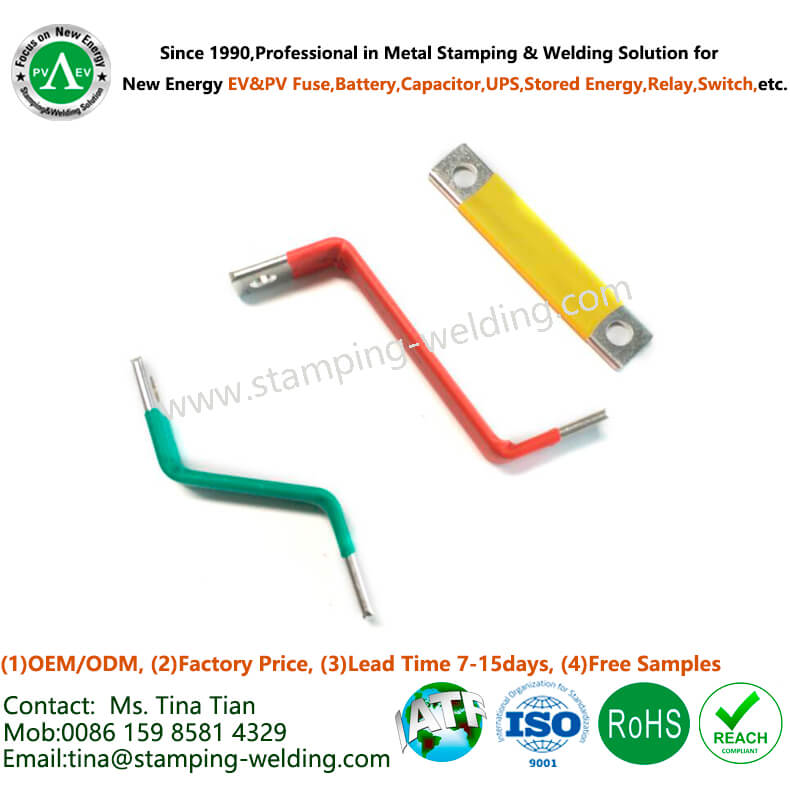
1- Products Name: Dip Insulated Busbar
2- Base Material Standard:
GB : T2Y2 Copper
DIN: E-Cu58 (Number: 2.0065)
EN: Cu-ETP ( Number: CW004A)
ISO: Cu-ETP
UNS: C11000
JIS: C1100
BS: C101
Purity ≥99.99% Copper, Conductivity %IACS≥97, Hardness 80~110HV, Tensile Strength 245-345MPa, other material also can be customized.
3-Surface Treatments:
(3.1) Silver plating
(3.2) Tin plating
(3.3) Nickel plating
(3.4) Ultrasonic cleaning
Normally plated thickness is 3μm to 12μm, but all upon customers' request.
4- Insulation Options:
(4.1) PET insulation paper (brands USA GTS, GERMANY KREMPEL, etc with white or milky white colors)
(4.2) PVC dipping (orange and green are the most popular colors)
(4.3) Epoxy powder coating (orange, green and grey are the most popular colors)
(4.4) PE heat shrink tube (orange, green, black, red are yellow are the most popular colors)
Flame Retardant / Fire Resistance: UL94-V-0 or upon you request;
Operating Temperature: -45ºC to +150 ºC
5- Copper Busbar Resistance: ≤0.00001Ω
6- Copper Busbar load voltage 3500VDC to 5000VDC and current 100A to 2000A
7- Copper Busbar Assembly Fixtures: USA PEM stainless nuts, studs, standoffs, screws, etc
8- Free Samples:1-10pcs is allowed
9- Lead Time:Orders 7-10days,Samples 10-20days(including the tooling/die production of Copper Stamped Part);
10- Packing: pearl cotton/blister box inside and carton/pallet outside
11- Certifications: ISO9001, IATF16949, RoHS, REACH, etc.
12- Production Capacity: 50,000,000 pcs/month
13- Applications: film capacitors for new energy electric vehicles and hybrid vehicles, new energy vehicle battery packs, new energy photovoltaic energy storage, power appliances, distribution cabinets, rail transit, cloud server uninterruptible power supplies and other power systems.
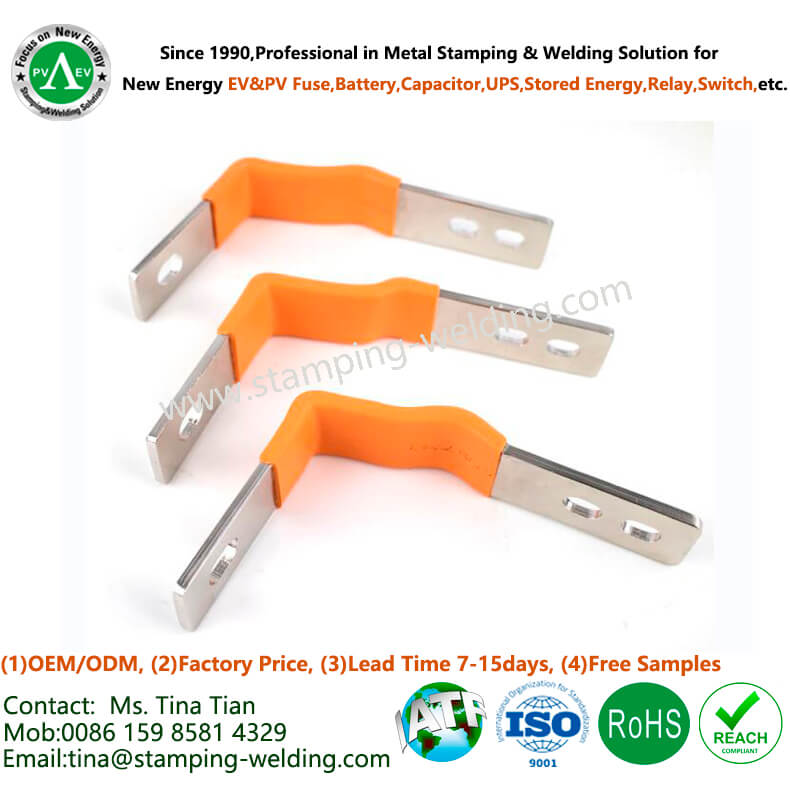
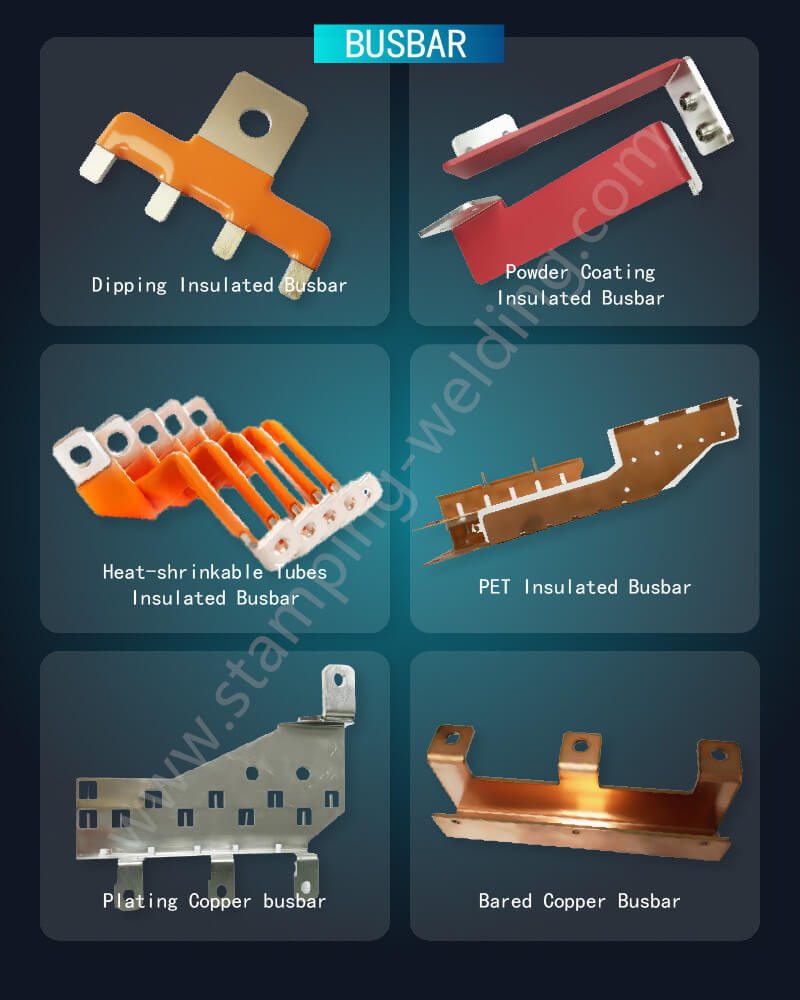
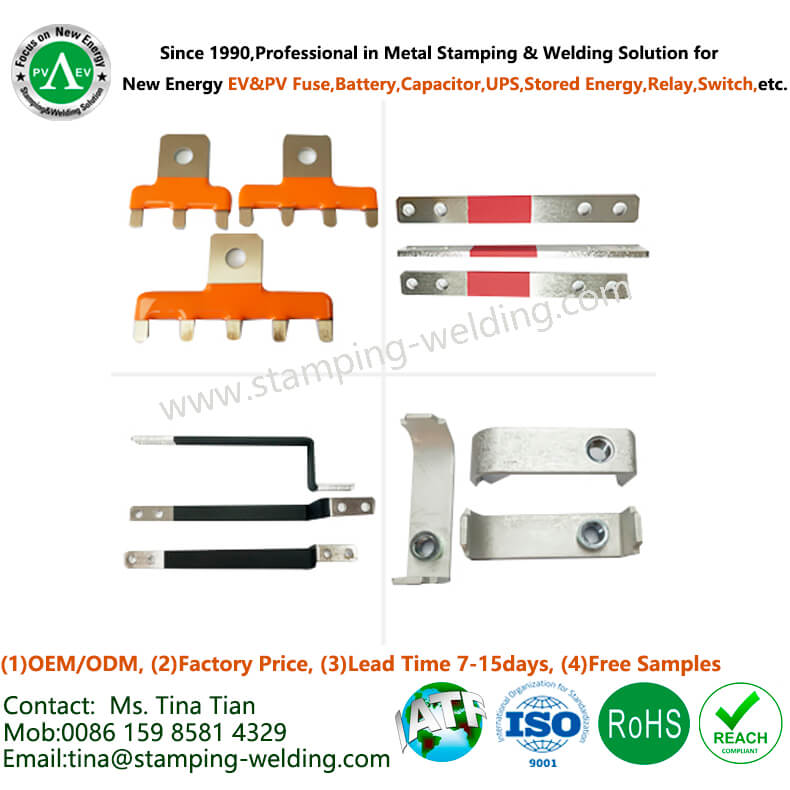 https://www.stamping-welding.com/busbar/
https://www.stamping-welding.com/busbar/
The use of dip-insulated busbars in electrical systems, including photovoltaic (PV) installations, offers several advantages:
1-Electrical Insulation:
Prevention of Short Circuits: The primary advantage of dip-insulated busbars is the electrical insulation they provide. The insulation layer helps prevent unintended electrical contact between adjacent busbars or other conductive components, reducing the risk of short circuits.
2-Enhanced Safety:
Protection Against Accidental Contact: The insulation on dip-insulated busbars adds a layer of safety by minimizing the chances of accidental contact with live electrical parts. This is crucial for maintaining a safe working environment, especially in PV installations where personnel may be involved in maintenance or repairs.
3-Reduced Electromagnetic Interference (EMI):
EMI Mitigation: The insulation on busbars can contribute to reducing electromagnetic interference. This is particularly important in applications like PV systems, where sensitive electronic components may be present, and minimizing EMI is essential for proper system operation.
4-Corrosion Resistance:
Protection Against Environmental Factors: The insulation layer can provide an additional barrier against environmental factors, including moisture and corrosive elements. This contributes to the longevity and durability of the busbars in various operating conditions.
5-Ease of Handling and Installation:
Improved Handling: The insulation on busbars often provides a smoother and more comfortable surface for handling during installation. It helps avoid direct contact with the conductive material, making the installation process safer and more straightforward.
6-Compliance with Electrical Standards:
Meeting Regulatory Requirements: Many electrical standards and codes require certain safety measures, including insulation, to be in place. Using dip-insulated busbars ensures compliance with these standards, which is crucial for obtaining regulatory approvals and certifications for the electrical system.
7-Customization and Adaptability:
Tailored Insulation Materials: Manufacturers can choose insulation materials that meet specific application requirements. This allows for customization based on factors such as temperature resistance, chemical resistance, and other environmental considerations.
8-Temperature Stability:
Thermal Insulation: The insulation layer can provide a degree of thermal insulation, helping stabilize the temperature of the busbars. This is particularly relevant in applications where temperature fluctuations may occur.
9-Enhanced Reliability:
Prevention of Insulation Breakdown: The insulation layer helps prevent insulation breakdown, enhancing the overall reliability and performance of the electrical system.
It's important to note that the specific advantages may vary based on the application and the characteristics of the insulation material used. When selecting dip-insulated busbars, it's crucial to consider the requirements of the specific electrical system and ensure compliance with relevant standards and regulations.
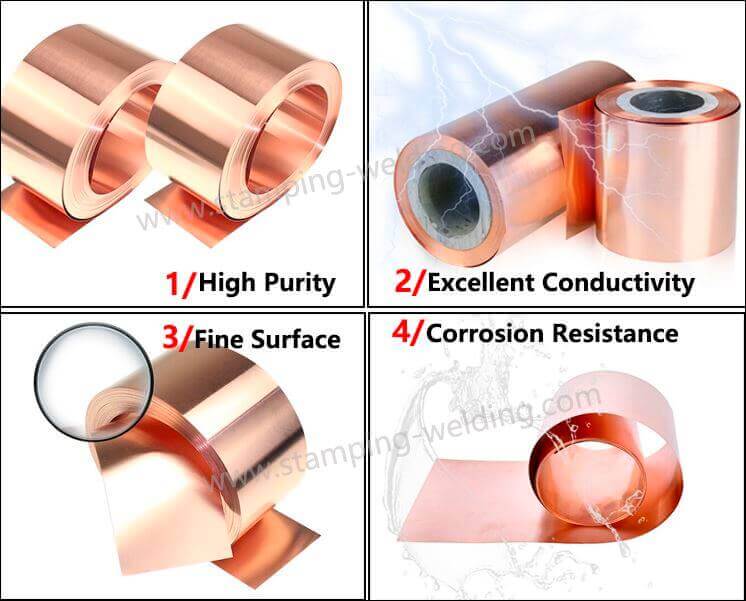
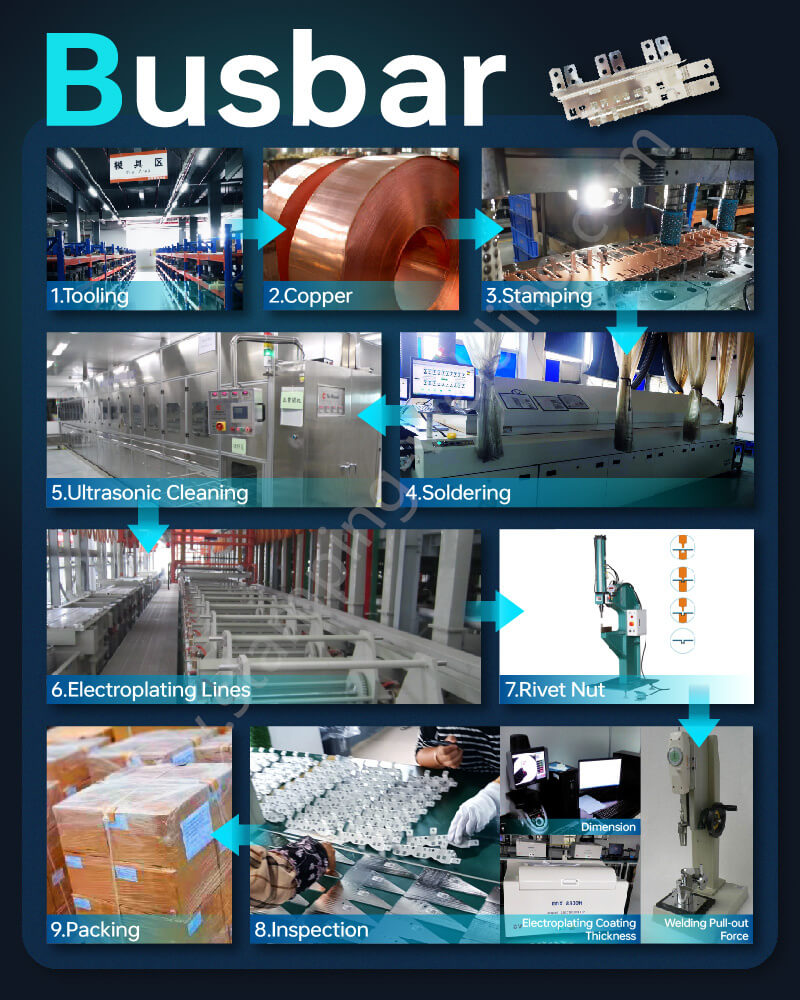
Contact Information:
Ms.Tina Tian (Sales Manager&Technology Engineer)
Xiamen Apollo Stamping Welding Technology Co., Ltd
Apollo Electronic Components (Xiamen) Co.,Ltd
Add: No.2, Chengyi North Road, Jimei Software Park, Jimei District, Xiamen City, Fujian Province, China, 361022
Mob/WhatsApp/WeChat: 0086-15985814329
Email: tina@stamping-welding.com
Web: www.stamping-welding.com , www.china-electronic-components.com
Since 2010, professional in Metal Stamping & Welding Solutions for New Energy EV & PV Fuse, Battery, Capactior, Relay, Switch, ect!